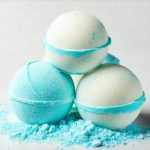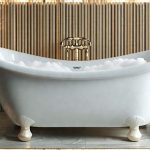Prostate issues are a common concern for men as they age, affecting quality of life significantly. Symptoms can range from frequent urination and urgency to pain and discomfort, prompting many to seek relief through various methods. Beyond medical interventions and lifestyle adjustments, seemingly simple daily routines like showering or bathing often come into question – could one be more beneficial than the other when it comes to prostate health? The truth isn’t always straightforward; both offer potential benefits and drawbacks depending on individual circumstances and the specific nature of the prostate issue. Understanding these nuances is key to making informed choices about personal care.
The goal isn’t necessarily to find a “cure” in a shower or bath, but rather to identify which method might offer temporary symptomatic relief or contribute to overall well-being that supports prostate health. It’s important to remember that prostate concerns are diverse – benign prostatic hyperplasia (BPH), prostatitis, and even prostate cancer can present differently—and what works for one person may not work for another. This exploration will delve into the potential effects of both options, focusing on how temperature, hydrostatics, and muscle relaxation play a role, always emphasizing the importance of consulting with a healthcare professional for personalized advice and treatment plans.
The Role of Temperature in Prostate Relief
Temperature plays a surprisingly significant role in managing prostate symptoms. Heat can have a relaxing effect on muscles, including those surrounding the prostate, potentially easing discomfort associated with conditions like chronic prostatitis or pelvic floor dysfunction. A warm bath or shower encourages blood flow to the area, which may help reduce inflammation and alleviate pain. Conversely, extreme heat could exacerbate certain conditions, making it vital to find a comfortable temperature that doesn’t worsen symptoms. – Consider a temperature that feels comfortably warm, but not scalding. – Monitor your body’s response; if you notice increased discomfort, lower the temperature immediately.
However, prolonged exposure to high temperatures can also have drawbacks. It could potentially lead to dehydration or even exacerbate vascular conditions in some individuals. This is where showers often gain an edge over baths. Showers allow for more controlled temperature regulation and shorter exposure times, minimizing potential negative effects. A quick warm shower focused on the pelvic area might provide targeted relief without the prolonged immersion of a bath. It’s about finding that sweet spot – enough warmth to relax muscles, but not so much as to cause further irritation or discomfort.
The idea behind utilizing heat isn’t new; warm compresses and sitz baths have long been recommended for perineal pain. Showers and baths simply offer larger-scale applications of this principle. It’s also crucial to differentiate between acute and chronic prostate issues. For acute prostatitis, characterized by sudden onset symptoms and often accompanied by fever, heat might be less appropriate without medical guidance. In these cases, cool compresses may be recommended to reduce inflammation.
Sitz Baths vs. Full Body Immersion
Sitz baths are specifically designed for perineal relief and have a long history in prostate care. They involve sitting in shallow, warm water that covers only the hips and buttocks – offering targeted heat therapy without full-body immersion. This is often recommended by healthcare professionals for managing chronic prostatitis symptoms or post-surgical discomfort. – A typical sitz bath lasts 15-20 minutes at a comfortable temperature (around 92-100°F). – Adding Epsom salts to the water can further enhance muscle relaxation and reduce inflammation, although scientific evidence supporting this claim is limited.
Full body immersion in a bathtub, while relaxing overall, doesn’t offer the same targeted approach as a sitz bath. The water temperature might be higher, increasing the risk of overheating or dehydration. Furthermore, the hydrostatic pressure exerted on the pelvic region during a full bath can sometimes exacerbate symptoms for men with BPH, potentially leading to increased urgency or discomfort. This is because the pressure can compress the bladder and urethra. It’s not that baths are inherently bad; it’s about understanding how they differ from more focused therapies like sitz baths.
The choice between a sitz bath and a full body immersion depends on individual needs and symptoms. If you’re looking for targeted relief for chronic prostatitis, a sitz bath is generally preferred. If you’re seeking overall relaxation and stress reduction alongside potential mild prostate support, a warm (but not excessively hot) shower or bath might be suitable – provided it doesn’t worsen your symptoms. Remember to always consult with your doctor before incorporating any new therapy into your routine.
Hydrostatic Pressure & Bladder Function
Hydrostatic pressure, the force exerted by fluids, is a key factor differentiating showers and baths in relation to prostate health. When submerged in water, the body experiences increased pressure, particularly at lower levels due to gravity. In a bathtub, this pressure can directly affect the bladder and urethra, potentially leading to increased urgency or discomfort for individuals with BPH. The enlarged prostate associated with BPH already constricts the urethra; adding external pressure can further impede urine flow and intensify symptoms.
Showers generally exert less hydrostatic pressure than baths because the water is constantly flowing around the body, reducing the build-up of static force. Additionally, standing in a shower often reduces the direct pressure on the pelvic region compared to sitting in a bath. However, even with showers, directing high-pressure jets of water towards the perineal area should be avoided, as this could also cause discomfort or irritation. – Focus on gentle warm streams rather than forceful jets.
It’s important to note that the effects of hydrostatic pressure vary depending on individual anatomy and the severity of prostate issues. Some men may not experience any noticeable difference between showers and baths, while others might find one significantly more comfortable than the other. Paying attention to your body’s response is crucial. If you notice increased urinary urgency or discomfort during a bath, reducing the water level or switching to a shower could provide relief.
Muscle Relaxation & Pelvic Floor Health
Chronic prostate issues often contribute to pelvic floor dysfunction – tightness and tension in the muscles that support the bladder, bowel, and sexual organs. This can exacerbate symptoms like pain, urgency, and difficulty urinating. Both warm showers and baths can promote muscle relaxation, helping alleviate these tensions and improve overall pelvic floor health. The warmth increases blood flow, delivering oxygen and nutrients to the muscles, while also reducing nerve sensitivity.
Pelvic floor exercises, such as Kegels, are often recommended alongside other therapies for prostate issues. Combining these exercises with warm water therapy can be particularly effective. Warmth helps relax the muscles, making it easier to engage in proper pelvic floor contractions. – Gentle stretching and mobility exercises performed during or after a warm shower or bath can further enhance muscle relaxation.
However, prolonged immersion in hot water might also lead to muscle fatigue and reduced effectiveness of pelvic floor exercises. Short, controlled showers are often preferable for maximizing the benefits of both warmth and exercise. The key is to find a balance between relaxation and activity. Ultimately, incorporating regular movement and targeted exercises into your routine, alongside appropriate temperature therapy, can significantly contribute to improved prostate health and quality of life. It’s about holistic care that addresses not just the symptoms but also the underlying muscular imbalances contributing to the problem.





















